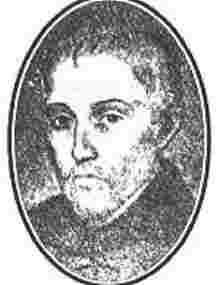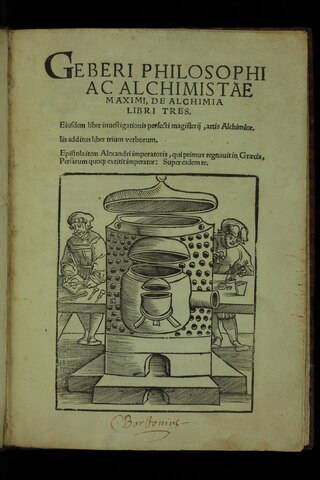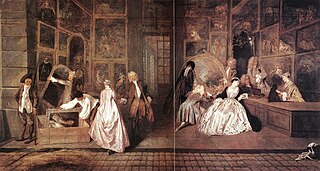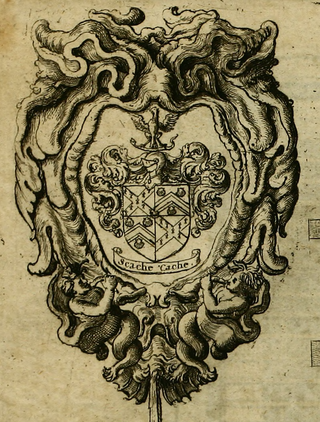Life
At the beginning of the 1610s, he was commissioned by the printer Lazare Zetzner to prepare a second edition of the great alchemical anthology, the Theatrum Chemicum, of which he projected three new volumes under the passably mystical title Théâtre d'or tout nouveau et béni, rayonnant des opulentes richesses du présent siècle d'or, rempli des ouvrages jusqu'alors inconnus, des plus excellents philosophes, tant anciens que modernes, traitant de la grande merveille bénie et du miraculeux mystère de la pierre physique et tinctoriale, de sa préparation et de son acquisition. (Theatre of gold all new and blessed, shining from its opulent riches of the present golden century, full of works even unknown, of most excellent philosophers, both ancient and modern, treating the great blessed marvel and the miraculous mystery of the physical stone and tinctorial, of its preparation and its acquisition.) This was at the time when Rosicrucianism was emerging, and Figulus's friend Adam Haslmayr, an early proponent of Rosicrucianism, was arrested. Worried, Figulus abandoned his work and fled.

Barlaam and Josaphat, also known as Bilawhar and Budhasaf, are Christian saints. Their life story was based on the life of the Gautama Buddha, and tells of the conversion of Josaphat to Christianity. According to the legend, an Indian king persecuted the Christian Church in his realm. After astrologers predicted that his own son would some day become a Christian, the king imprisoned the young prince Josaphat, who nevertheless met the hermit Saint Barlaam and converted to Christianity. After much tribulation the young prince's father accepted the Christian faith, turned over his throne to Josaphat, and retired to the desert to become a hermit. Josaphat himself later abdicated and went into seclusion with his old teacher Barlaam.

Rosicrucianism is a spiritual and cultural movement that arose in early modern Europe in the early 17th century after the publication of several texts announcing to the world a new esoteric order. Rosicrucianism is symbolized by the Rosy Cross or Rose Cross. There have been several Rosicrucian organizations, since the initial movement was founded, including the Order of the Golden and Rosy Cross (1750s–1790s), the Societas Rosicruciana in Anglia (1865–present), and the Hermetic Order of the Golden Dawn (1887–1903).

Luxembourg, also known as Luxembourg City, is the capital city of Luxembourg and the country's most populous commune. Standing at the confluence of the Alzette and Pétrusse rivers in southern Luxembourg, the city lies at the heart of Western Europe, situated 213 km (132 mi) by road from Brussels, 372 km (231 mi) from Paris, and 209 km (130 mi) from Cologne. The city contains Luxembourg Castle, established by the Franks in the Early Middle Ages, around which a settlement developed.

Paracelsus, born Theophrastus von Hohenheim, was a Swiss physician, alchemist, lay theologian, and philosopher of the German Renaissance.

A secret society is an organization about which the activities, events, inner functioning, or membership are concealed. The society may or may not attempt to conceal its existence. The term usually excludes covert groups, such as intelligence agencies or guerrilla warfare insurgencies, that hide their activities and memberships but maintain a public presence.
The 1711 Sales Auction Catalogue of the Library of Sir Thomas Browne highlights the erudition of the physician, philosopher and encyclopedist, Sir Thomas Browne (1605-1682). It also illustrates the proliferation, distribution and availability of books printed throughout 17th century Europe which were purchased by the intelligentsia, aristocracy, priest, physician and educated merchant-class.

Tomás Luis de Victoria was the most famous Spanish composer of the Renaissance. He stands with Giovanni Pierluigi da Palestrina and Orlande de Lassus as among the principal composers of the late Renaissance, and was "admired above all for the intensity of some of his motets and of his Offices for the Dead and for Holy Week". His surviving oeuvre, unlike that of his colleagues, is almost exclusively sacred and polyphonic vocal music, set to Latin texts. As a Catholic priest, as well as an accomplished organist and singer, his career spanned both Spain and Italy. However, he preferred the life of a composer to that of a performer.

Jean-Pierre Papin is a French football manager and former professional player who played as a forward and is the current technical advisor of Ligue 1 club Marseille. Considered to be one of the best centre-forwards of his generation, he won the Ballon d'Or in 1991.

Pseudo-Geber is the presumed author or group of authors responsible for a corpus of pseudepigraphic alchemical writings dating to the late 13th and early 14th centuries. These writings were falsely attributed to Jabir ibn Hayyan, an early alchemist of the Islamic Golden Age.

Michael Maier was a German physician and counsellor to Rudolf II Habsburg. He was a learned alchemist, epigramist, and amateur composer.

A marchand-mercier is a French term for a type of entrepreneur working outside the guild system of craftsmen but carefully constrained by the regulations of a corporation under rules codified in 1613. The reduplicative term literally means a merchant of merchandise, but in the 18th century took the connotation of a merchant of objets d'art. Earliest references to this Corps de la Ville de Paris can be found at the close of the 16th century, but in the 18th century marchands-merciers were shopkeepers but they also played an important role in the decoration of Paris homes. In fact, they served as general contractors, designing and commissioning pieces of the most fashionable furniture, and often, in addition, worked outside of their shops as interior decorators, responsible for many aspects of a room's decor. In Paris, the guild system, in place since the late Middle Ages, prohibited craftsmen from working with any material with which they had not undergone a formal apprenticeship. Only a marchand-mercier who worked outside of the guild system, therefore, could mount Chinese porcelains with gilt-bronze handles and stands, fit the cabinetmaker's furniture with Japanese lacquer or Sèvres porcelain plaques, and supply furniture with opulent gilt-bronze mounts.

The Story of Pretty Goldilocks or The Beauty with Golden Hair is a French literary fairy tale written by Madame d'Aulnoy. Andrew Lang included it in The Blue Fairy Book.

The Place Stanislas is a large pedestrianised square in the French city of Nancy, in the Lorraine historic region. Built between 1752 and 1756 on the orders of Stanislaus I, the square is one of the oldest examples of an architecturally consistent and monumental public square, and is an excellent example of 18th-century urban architecture. Since 1983, the architectural ensemble comprising the Place Stanislas, the extension of its axis, the Place de la Carrière and the Place d'Alliance, has been a UNESCO World Heritage Site.

Lyon, traditionally spelled in English as Lyons, is the third-largest city of France. It is located at the confluence of the rivers Rhône and Saône, to the northwest of the French Alps, 391 km (243 mi) southeast of Paris, 278 km (173 mi) north of Marseille, 113 km (70 mi) southwest of Geneva, 58 km (36 mi) northeast of Saint-Étienne.

William Backhouse was an English philosopher, alchemist, astrologer, translator, and the esoteric mentor of Elias Ashmole.

Theatrum Chemicum is a compendium of early alchemical writings published in six volumes over the course of six decades. The first three volumes were published in 1602, while the final sixth volume was published in its entirety in 1661. Theatrum Chemicum remains the most comprehensive collective work on the subject of alchemy ever published in the Western world.
Johannes Nicolaus Furichius (1602–1633) was a Franco-German Neo-Latin Imperial poet laureate, pharmacist, doctor of medicine and alchemist from Strasbourg.

Alexander von Suchten was an alchemist, doctor and writer.

"An Wasserflüssen Babylon" is a Lutheran hymn by Wolfgang Dachstein, which was first published in Strasbourg in 1525. The text of the hymn is a paraphrase of Psalm 137. Its singing tune, which is the best known part of the hymn and Dachstein's best known melody, was popularised as the chorale tune of Paul Gerhardt's 17th-century Passion hymn "Ein Lämmlein geht und trägt die Schuld". With this hymn text, Dachstein's tune is included in the Protestant hymnal Evangelisches Gesangbuch.

















